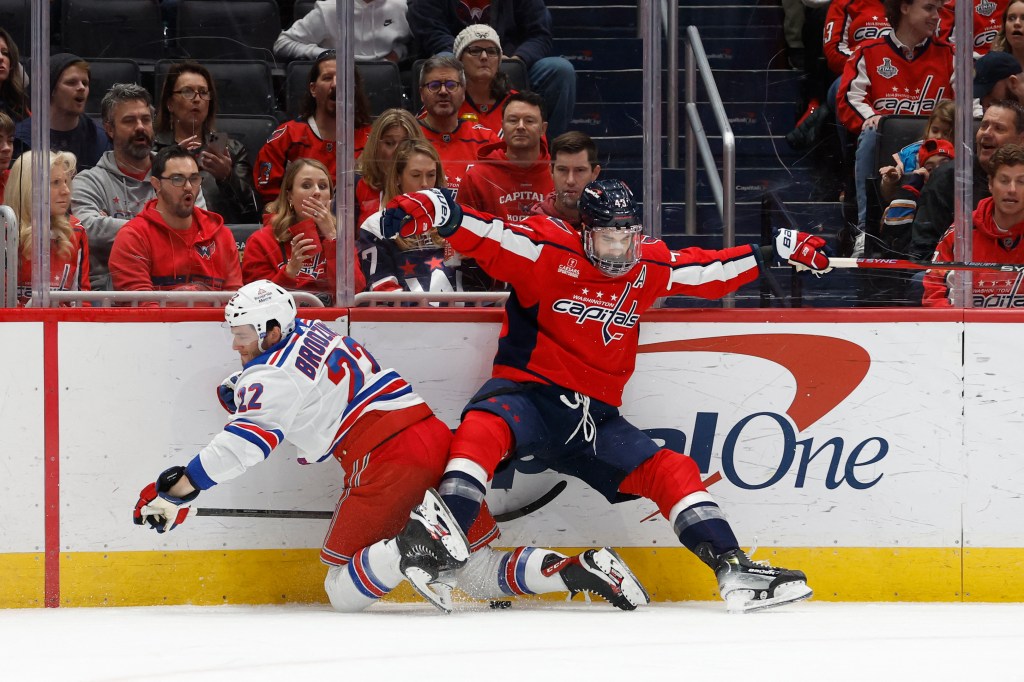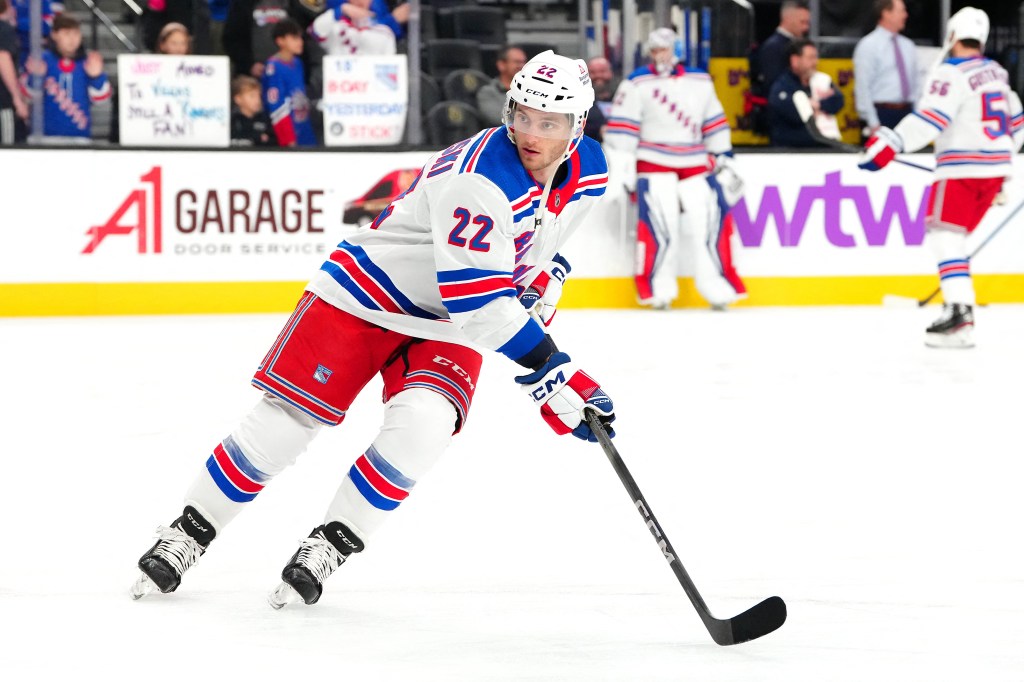In past seasons, Jonny Brodzinski would’ve never been in this spot.
It was his 21st consecutive game — and 22nd total — with the Rangers in 2023-24.
A career filled with being recalled and then being reassigned had finally led to some stability. His name stopped appearing on the transaction log.
And after Tom Wilson crushed Brodzinski into the boards Jan. 13, the nondescript third-line center in a nondescript midseason game had become a viral talking point for franchise legend and ESPN analyst Mark Messier during an intermission segment.
Messier ripped Brodzinski for putting himself “in a vulnerable position,” saying that if he’d done that, his career would’ve lasted five years — and not 26.
He implored children watching the broadcast to absorb the hit, while still protecting the puck, by turning sideways.
Brodzinski hasn’t thought about that sequence since it happened, and while he acknowledged being in a vulnerable position, he was “just protecting the puck.”

“I wasn’t expecting [Wilson] to put every single ounce of his body into me,” Brodzinski told The Post. “More just like kinda pin me up against the wall like everybody else does. Yeah, it is what it is.”
If anything, the moment demonstrates that there are still learning curves for the 30-year-old, with just 132 NHL games compiled across a professional career that started when he signed an entry-level deal with the Kings in 2015.
But as the Rangers navigate the rest of the season without center Filip Chytil, Brodzinski has transitioned from a key piece for AHL Hartford to a regular NHL center, logging 30 games since the Blueshirts called him up at the end of November.
He’s on track to shatter his career-high for NHL games in a season (35). The trade deadline still looms as the variable that could threaten his progress — if Chris Drury opts to acquire a center — and unravel what Brodzinski described as the most stability he’s experienced in years.
But until that juncture arrives, he’ll continue skating with Kaapo Kakko and Will Cuylle to form a “noticeable,” as Peter Laviolette called it, line likely to remain intact for Wednesday’s game against the Lightning and into the short-term future. But Brodzinski, given the ebb and flow of a 13th or 14th or 15th forward’s season, has trained himself to avoid thinking further into the future than that.
“As soon as you start looking five, 10, 15 games down, I’m sent back down,” he said after practice Tuesday. “You can’t do that. You take it game-by-game.”
Brodzinski’s return to the Rangers on Nov. 29 followed Kakko’s lower-body injury against the Sabres, which sidelined him for 21 games.
He was used to how these conversations usually went. Brodzinski would skate in a game or two. Someone would be out with an injury or for another reason.
Even if he played well, Brodzinski would hear some variation of, “Good game. We’ll see you next time.”
Then, he’d be back in the AHL — a league where he has logged 331 regular-season and playoff games. Maybe another chance would materialize that year. Maybe it wouldn’t. That was the life for a player whose career depended on cameos.
It happened for Brodzinski in three seasons with the Kings (six games, 35 games, 13 games), one season with the Sharks (three games) and his first two years with the Rangers (22 games, 17 games). He learned to have a short memory. To try and maximize leadership roles in the AHL.
That way, when Brodzinski did return, he’d have young players to assist and contributions — usually skating around 20 minutes per game in the minors and anchoring the power play — to make.

“You leave playing in the NHL, which sucks, but you go down and you’re playing a full game,” Brodzinski said.
But Brodzinski hasn’t returned to Hartford since that November transaction.
He has scored two goals, compiled 11 points and took the viral hit that prompted Messier’s critique.
When Kakko returned, the pair formed a line with Cuylle and brought “something different to the table,” Laviolette said.
In the Rangers’ win against the Avalanche on Monday, Laviolette kept using that line every third shift to ensure ice time. They led the Rangers’ units in high-danger chances (three) and expected goals for (0.45), according to Natural Stat Trick.
Brodzinski’s first few games with the Rangers were all about settling into a rhythm, Laviolette said. He’d shifted from wing to center with Hartford in case the Blueshirts had an opening, and when that happened, Brodzinski made sure he wouldn’t get swapped out with another AHL player.
He finally found a way to stick around.
“This time, with the more extended look, it just feels a little different,” he said.














